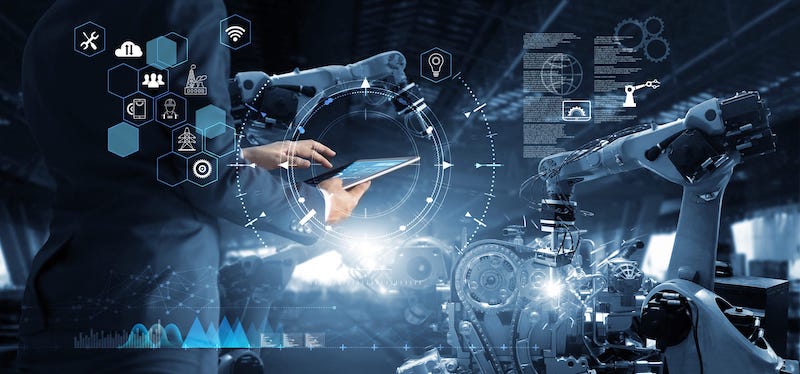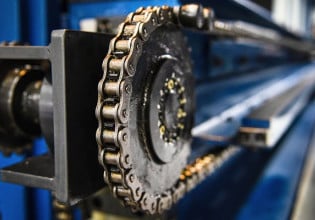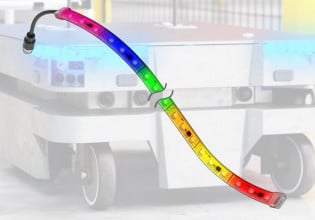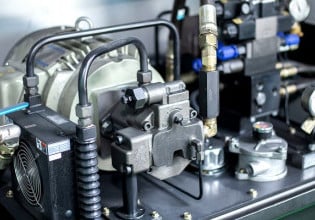Devices and Equipment Used in Industrial Remote Monitoring
This article in our continuing series about remote monitoring covers equipment and devices necessary to establish a remote monitoring mechanism.
The success of remote monitoring is all about data integrity. The data collected should remain accurate, original, and unaffected during all life cycle phases. If the data fails in these qualities, remote monitoring fails.

Gateways can ensure all systems speak the same language. Image used courtesy of LoadSys
Remote monitoring in an industrial environment requires specialized strategies and consideration. Industrial monitoring devices operate on entirely different protocols and are developed for applications not relating to the existing communication purposes. A hierarchy of interconnected systems working in a combined form is necessary to achieve a successful remote monitoring session.
Remote Monitoring Devices
Many devices and equipment are used in remote monitoring. The basics include sensors, controllers, gateways, communication, storage (or cloud), and the dashboard. Data flows from each device to the next, from the sensor all the way to the dashboard, and then is finally seen by the relevant engineer.
Sensor Data
Data collection refers to the sensors and devices that collect process data. These sensors collect real-time data representing the process’s actual behavior. The sensor selection depends on the procedure or the parameter required for monitoring.
All sensors connect to the central controller, which collects the information from these devices as a part of machine operation. The same sensor data is used for remote monitoring.
Example sensors include temperature, pressure, and speed.
Main Controller
The central controller interfaces with each sensor and converts the readings into an acceptable format for all the networked devices. An example of the main controller can be a programmable logic controller (PLC) or microprocessor.

Rockwell Automation ControlLogix 5880 Controllers. Image used courtesy of Rockwell Automation
The central controller also interfaces with the physical network medium such as Ethernet, Modbus, or IP-based network. It utilizes a communication gateway to convert the sensor data into a format understandable by the communication media. Without a proper gateway, the main controller cannot send or receive data from the remote monitoring system.
Communication Gateway
Gateway facilitates communication between the devices operating on different protocols. Without a proper communication gateway, information exchange between different categories of the network is not possible.
Gateways provide connectivity between field devices such as sensors and variable frequency drives (VFDs) and the external network through which remote monitoring occurs. External networks can be Internet or cellular, depending upon the network availability or user requirements.
The gateway connects to the field devices through Ethernet, Modbus, or another supported interface.
Communication Media
The communication media is the heart of remote monitoring. Without reliable, safe, and fast communication media, remote monitoring is not possible. The communication media consists of the Internet or cellular networks.
The communication media selection depends upon the availability of a particular technology at the desired location. For example, for the facilities located in the city or near the city, an Internet network is readily available and can be used. Remotely-located sites, such as water-related facilities, may not have an Internet network readily available. Remote monitoring can be performed at these remote locations through cellular networks to establish communication media.
The communication media should be safe, secure, and resist hacking attempts. Internet risks unauthorized access and malicious activities for all of the interconnected systems and their associated data. Virtual private servers and firewalls can secure the communication media. These mechanisms isolate the internal network from the outside Internet, thus reducing data breaches and hacking risks.
Storage or Cloud
The central controller sends the data collected over the communication media to a storage system or cloud-based systems. Storage systems can be accessed remotely without any special hardware or software requirement. The only requirement is the network availability and the compatible device that can connect to the cloud or central analytics.
The central analytics, or cloud, is the current primary system through which industrial remote monitoring takes place and contains all the necessary functions and applications.
Dashboard
The dashboard contains the user interface for the technician to execute remote monitoring operations, and it serves as a centralized control room for small monitoring activities. The dashboard displays the data from all collection points, and it includes a control mechanism to control different process operations.

A distributed control system (DCS). Image used courtesy of ABB
Some ways the departments can find a dashboard useful for their routine operations include the following.
- Alarm management: Initiate an alarm system when a process variable deviates from an acceptable range.
- Process parameters: Examine values of process parameters such as machine output or speed, indicating an ongoing process status.
- Machine or equipment status: Indicate the machine’s health status and predicts faults like motor overcurrent, undervoltage condition, or gearbox lubrication levels.
- Process report: Indicate how a process has been carried out and overviews the process effectiveness on a user-selectable frequency range. It provides historical information and graphs for relevant departments.
Remote Monitoring Through the Dashboard
Through the dashboard, all relevant departments can monitor their respective parameters and receive a detailed overview of their operations. Specifically, the engineering and production departments can use a dashboard in the following ways.
The engineering department can keep track of maintenance effectiveness by monitoring and comparing parameters before and after maintenance activity. Monitoring machine health parameters helps the engineering department plan the maintenance activity and production schedule.
The production department can use the dashboard to track production activity and operator efficiency. It also helps in future production planning by monitoring parameters such as machine output and total yield time.
A sensor picks up a machine’s data and sends it through the controller, gateway, communication, storage/cloud, and dashboard. Remote monitoring heavily relies on all of the aspects to properly analyze data.






